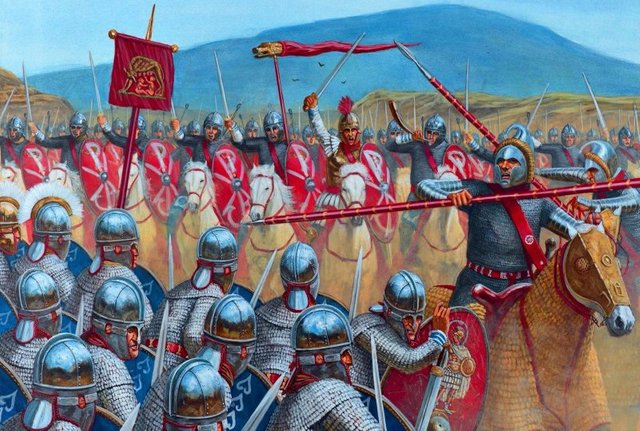Rise of the Roman Empire (23rd episode): Third Macedonian War and the Fall of Independent Greece
After the Second Macedonian War, the declaration of Flaminus allowed the independent activities of the Greek city-states. But for Greece the declaration meant full freedom and the right to act according to their own choice, while for the Roman Senate it meant to refrain from actions that would harm Rome's interests. In this context, there was dissatisfaction within the Akian League with the decision of the Roman Senate to resolve the dispute between the Akian League and Sparta.Gradually two parties were born here and in other city-states, pro-Rome and anti-Rome. Opposition groups called for Macedonia's help in trying to restore power in Rome.
Philip, meanwhile, was instrumental in Rome's campaign in Syria against Antiochus III. He hoped that as a reward Rome would return the territories he had lost after the Second Macedonian War.
But the Roman Senate did not want to see the powerful Macedonia as Rome's opponent. So they rejected Philip's offer. So Philip began to prepare to leave Rome. That is why he first focused on increasing military power. He also sought to form alliances with other anti-Roman forces in Greece.
When Philip died in 169 BC, his son Perseus ascended the throne. He received 30,000 to 40,000 troops from Philip, and the treasury had 7,000 talents, with a current market value of about ৭ 8,200,000. Perseus eagerly took the initiative to implement his father's unfinished plan. An alliance was formed with many anti-Romans. The interest in expanding the borders of his empire to the north also seemed an ominous sign to the Roman Senate.Roman allies from Greece kept him informed of all the news on a regular basis. In 162 BC, apostles from the Roman Senate submitted their demands to Perseus. Macedonia's independence was handed over to Rome. Perseus did not agree. The beginning is the Third Macedonian War.
*Roman army in Greece
March, 181 BC.
The Roman consul Crassus crossed the Adriatic and reached Apollonia. He was accompanied by 35,000 infantry and 2,000 cavalry. The combined fleet of Rome and Pergamon patrolled the east coast of Greece, and Crassus marched on Thessalonica with his army by land to Epirus. Perseus was based there. He was joined by his friends.In all, his army consisted of about 43,000 warriors, including 4,000 cavalry, of which 5,000 were the elite Macedonian royal elite force. When Crassus arrived in Thessaly, the Roman Allies joined him with 2,000 cavalry and 5,500 infantry.
*Calnissus (161 BC)
The Roman army encamped near the hill of Calnisas in Thessaly. Desiring to fight them face to face, Perseus moved his camp very close. He prepared for a full-scale attack if the Macedonians were victorious in a small group of Romans clashing with his cavalry and light-armed warriors.
Perseus deployed his phalanx and sent cavalry and light-armed infantry. Crassus, meanwhile, confronts Perseus with only cavalry and light-armed infantry, leaving his main force, the heavily armed infantry, inside the camp. Crassus broke his right arm under heavy pressure from Macedonian cavalry.The middle of the army was also forced to retreat. The Roman army retreated to the camp. About 200 Roman cavalry and 2,000 infantry were killed. However, Perseus did not move forward as the formation of Phalanx was not suitable for camp attack.
